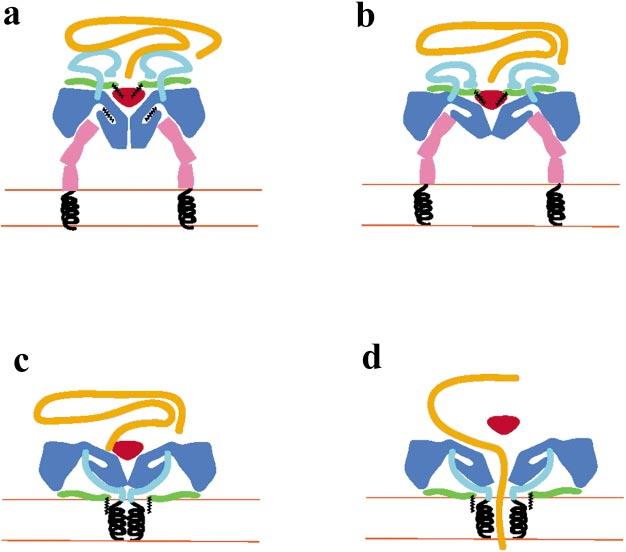Figure 9.

A cartoon representation of a working model for the cell entry mechanism of polio- and related viruses. (a) The virus attaches to the receptor on the membrane of a cell to form an initial complex. The three domains of the receptor are shown in pink with the transmembrane helices (black) anchored in the membrane. The body of the virus is in blue, with the pocket factor in black. The N-terminal extension of VP1 is cyan, the VP3 plug is red, VP4 is green, the myristate is black, and the viral RNA is orange. (b) At physiological temperatures the receptor induces a subtle conformational change that opens the receptor-binding site and presumably displaces the pocket factor to produce a tight-binding complex. (c) The virus undergoes conformational rearrangements that result in the insertion of the amphipathic helices of the N terminus of VP1 (black spirals) and the myristate group of VP4 into the membrane to form a channel. (d) A trigger (perhaps fluxes in Ca+2 concentration) results in the expansion of the particle, the expansion of the pore to form a channel, the temporary removal of the VP3 plug, and the release of the viral RNA into the cell.
